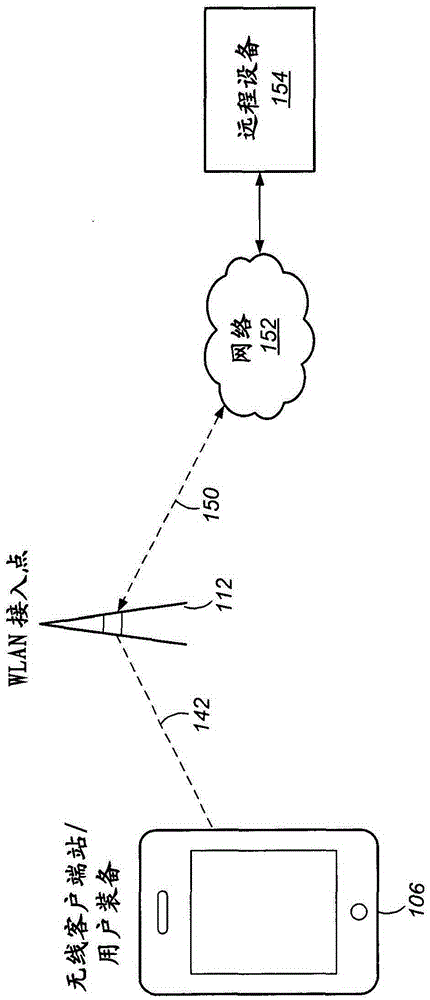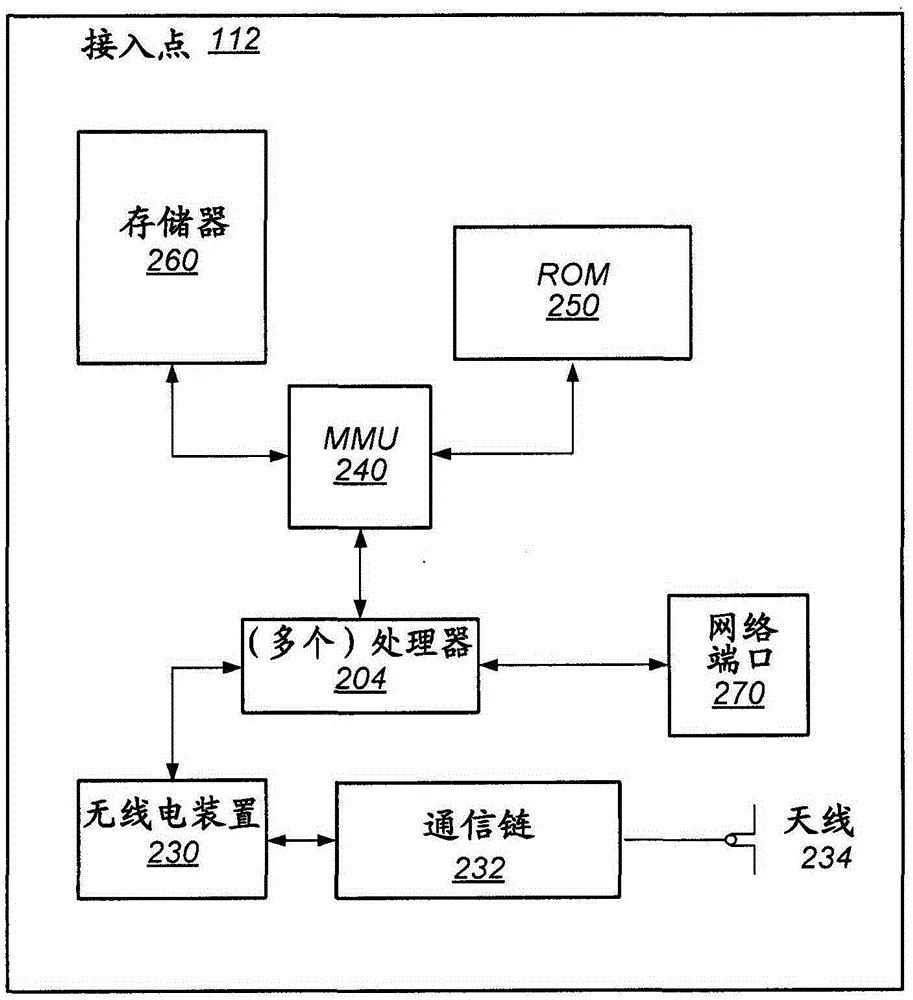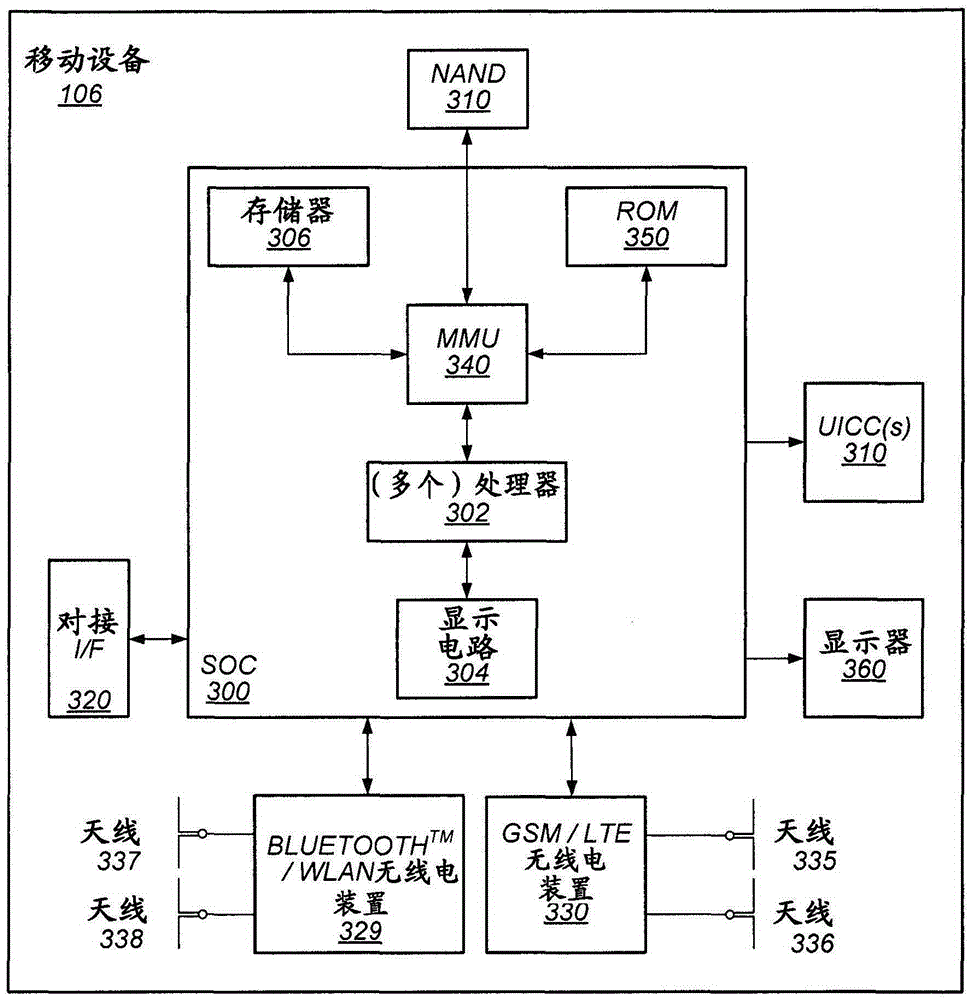Wi-fi adaptive receiver diversity and wi-fi adaptive transmit antenna selection
An antenna, a technology for receiving signals, applied in the field of adaptive receiver diversity and antenna selection, can solve problems such as power usage
- Summary
- Abstract
- Description
- Claims
- Application Information
AI Technical Summary
Problems solved by technology
Method used
Image
Examples
Embodiment Construction
[0027] abbreviation
[0028] Various abbreviations are used in this application. Definitions of the most prominently used abbreviations that may appear in this application are given below:
[0029] UE: user equipment
[0030] AP: access point
[0031] DL: Downlink (from BS to UE)
[0032] UL: Uplink (from UE to BS)
[0033] TX: transmit
[0034] RX: receive
[0035] LAN: local area network
[0036] WLAN: Wireless LAN
[0037] RAT: radio access technology
[0038] the term
[0039] The following is a glossary of terms used in this disclosure:
[0040]memory medium - any of various types of non-transitory memory or storage devices. The term "storage medium" is intended to include: installation media, such as CD-ROM, floppy disk, or tape devices; computer system memory or random access memory, such as DRAM, DDRRAM, SRAM, EDORAM, RambusRAM, etc.; non-volatile memory, such as Flash memory, magnetic media such as hard drives, or optical storage devices; registers or ...
PUM
 Login to View More
Login to View More Abstract
Description
Claims
Application Information
 Login to View More
Login to View More - R&D
- Intellectual Property
- Life Sciences
- Materials
- Tech Scout
- Unparalleled Data Quality
- Higher Quality Content
- 60% Fewer Hallucinations
Browse by: Latest US Patents, China's latest patents, Technical Efficacy Thesaurus, Application Domain, Technology Topic, Popular Technical Reports.
© 2025 PatSnap. All rights reserved.Legal|Privacy policy|Modern Slavery Act Transparency Statement|Sitemap|About US| Contact US: help@patsnap.com



